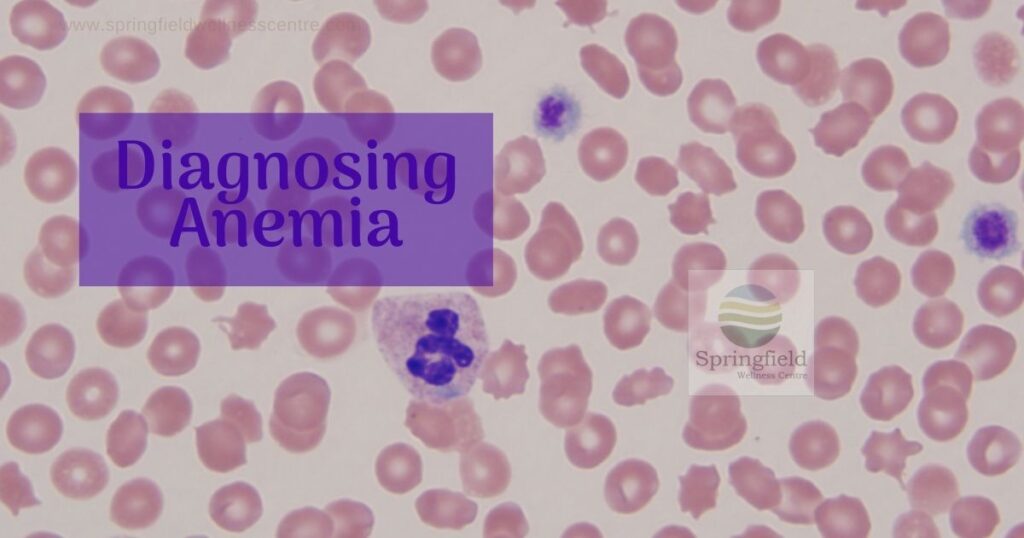In our earlier blog on Anemia, we saw how not just iron-deficiency causes Anemia but how a host of other reasons also can cause the condition. Various anemia causes have various diagnostic methodologies. But before getting into the diagnosing part, it is wise to look into the symptoms of Anemia.
General Symptoms of Anemia
There are many symptoms of anemia and they can differ with the reason why anemia has occurred in the first place. This means the cause of anemia determines the symptoms too. Symptoms may not manifest in the initial stages of the anemia or rather they are so mild that most of the time, the patient can fail to observe the general symptoms. But by and large the common symptoms of anemia irrespective of the causes are
- A feeling of fatigue and weakness
- Feeling dizzy and headache
- Irregular heartbeats
- Shortness of breath
- Pale skin or sometimes yellow skin
- Hands and feet becoming cold
Diagnosing Anemia
The first step in any diagnosis is the talk the experienced physician or surgeon will have with the patient. This discussion is important in ascertaining the symptoms as experienced by the patient, any pre-existing medical conditions in the patient, and knowing family history of any medical conditions. After this, the doctor proceeds to do a physical examination. This ascertains the symptoms of anemia and any physical clues that might point to anemia.
The step after discussion and physical examination are the specific tests the doctor might request you to take to confirm the presence and type of anemia.
The first and foremost test will be the Complete Blood Count (CBC) test. This is the standard first level blood test the doctor might ask you to take.
Complete Blood Count (CBC)
This test helps in getting information on the count of red blood cells along with other blood cell types like WBC, platelets, etc. But primarily the RBC count, also called Hemocrit value, can indicate the presence of anemia. Along with RBC count details, the level of hemoglobin is also indicated in the report and this might give the doctor more information. If the RBC count or Hemocrit value is between 40% to 52% in men and 35% to 47% in women, they are considered normal. Similarly, hemoglobin value if it remains between 14-18 grams for men and between 12-16 grams for women, they are considered normal. So any anomaly in the Hemocrit value and Hemoglobin value is looked in the CBC report to diagnose anemia.
Peripheral Smear Test
A peripheral smear test ascertains the blood cell morphology like size, shape and number, and any infective reasons present in the blood cells. This test can give information if the anemia is caused by iron deficiency, vitamin B12 deficiency, any anemia due to infection, or even cancer. In short, this test gives broad information on the RBC morphology and this can give a direction of what other specific tests or diagnoses to take to confirm the type or reason of anemia.
Motion Test
- The presence of worms can also cause anemia. The presence of the egg of the worms in the motion can detect it. Some worms like roundworms can suck blood and can cause anemia.
- The presence of any red blood cells in the motion can indicate anemia due to piles or gastrointestinal cancer.
Endoscopy – Upper GI Endoscopy
- If everything is ruled out, then absorption of iron, vitamins B12, B6, and folate can be a possibility and this can be found by this type in endoscopy.
- Upper GI cancer (Food pipe, stomach) can also cause anemia and this can also be found out using endoscopy.
Specific Tests for Diagnosing Anemia
- The Doctor might ask to check the iron level in the blood to determine if the anemia is caused due to iron deficiency. Reports like serum ferritin level can give accurate details on iron-deficiency anemia.
- Anemia is also caused by a deficiency of Vitamin B12 and folate. If the doctor infers from the peripheral smear test that vitamin B12, folate deficiency may be the reason, a test that can give the level of Vitamin B12, B6, and folate can be asked for. In this way, vitamin deficiency anemia can be detected.
- The deficiency of Vitamin B12 can sometimes cause red blood cells to enlarge unusually. This can be indicated by the peripheral smear test for the presence of megaloblastic anemia. Also by this same method, sickle-cell anemia can also be diagnosed. This Hemolytic anemia type can sometimes be life-threatening and hence this diagnosis can come in handy at the right time.
- Rarely, anemia can be caused due to the immune attack on the blood cells, enzyme defects, etc. These can be diagnosed using specialized blood tests.
- Very rarely, bone marrow diseases can cause anemia and in such cases, the doctor might ask you to undergo a bone marrow diagnosis test.
